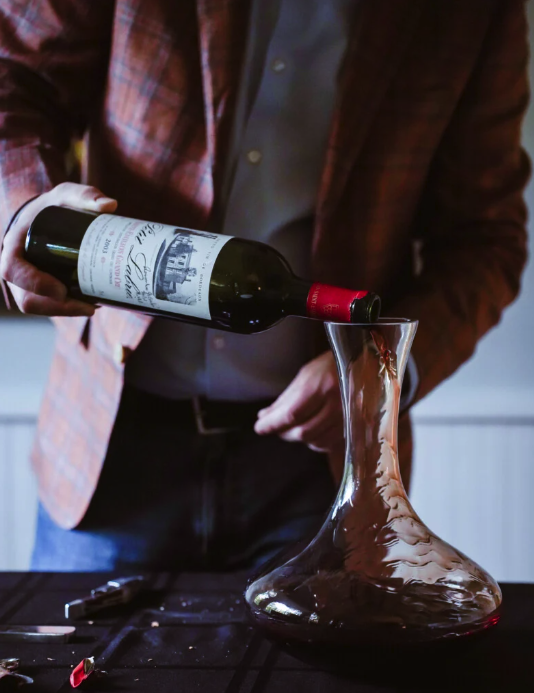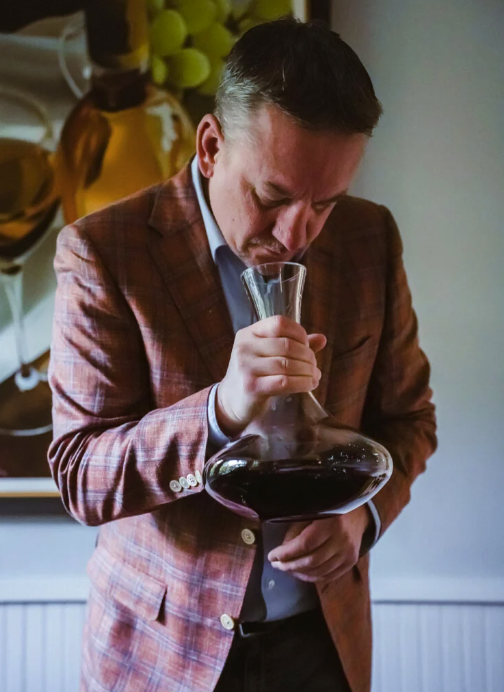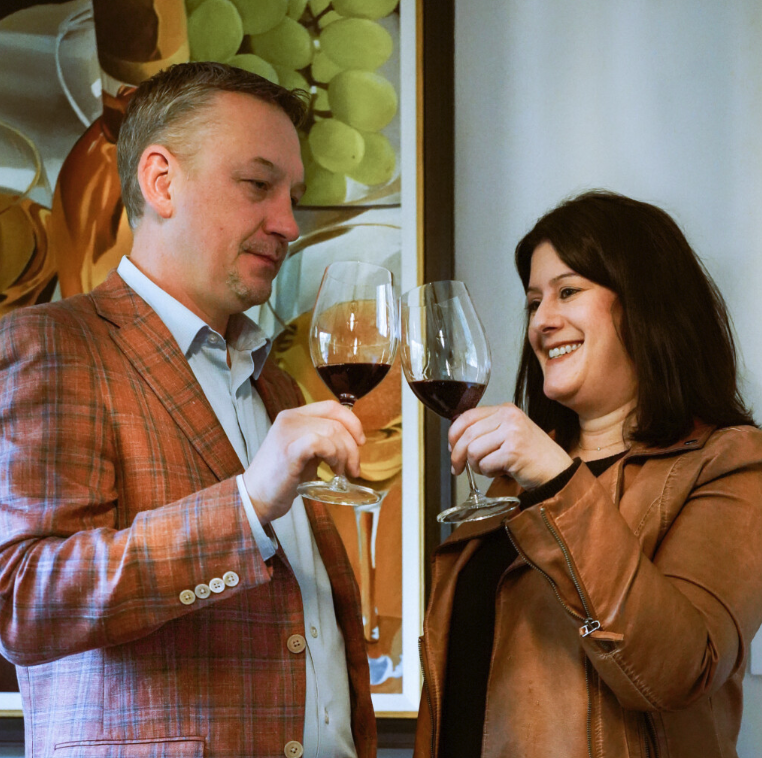Miller: Do you own a cherished bottle of wine that you just can’t bring yourself to open? Maybe it was gifted to you from a loved one or discovered while traveling, and you brought it back home to enjoy one day on a special occasion.
For me, it was a 2003 bottle of Petit Labrie, Saint-Émilion Grand Cru that I had tasted at a winemaker’s home during a travel, food, and wine writing seminar in France. Everything about that experience—the autograph on the label noting “Remember Saint-Émilion” and the scent and taste of the wine combined with laughter, food, and fascinating company was all wrapped up in that bottle. Milestone birthdays passed, celebrations would come and go, yet I never reached for it. It symbolized precious memories; I just couldn’t let go; there simply wasn’t an occasion that appeared to be special enough.
Sharra: That’s the tricky part about saving a bottle for just the right occasion. As a sommelier, I witness guests enjoying aged bottles of wine from their own collections, and typically ask what occasion is being celebrated. Sometimes it’s a birthday or an anniversary, but often they just felt it was finally time to pull the cork. Often, the wine is drinking brilliantly no matter the age: however, there are times when the wine is past its prime or not even drinkable.
Cellaring and proper storage of wine is vital to its longevity. Wine should be kept in a cool, dark area as fluctuations in temperature, exposure to sunlight, lack of humidity, and position of the bottle can drastically affect a wine in the aging process. Structure (its chemical composition, including acidity, alcohol, sugar, and tannins) must also be taken into consideration when you are deciding if the wine in question should be enjoyed now or sometime in the future. Once all these factors come to fruition, whether it be fifteen, twenty, or even fifty years down the road, the reward can be unforgettable.
Miller: Hearing Jeff share these stories of opening aged bottles got me thinking that the time had come to take advantage of Open that Bottle Night (OTBN). A holiday that, started back in 1999 by former Wall Street Journal wine columnists John Brecher and Dorothy Gaiter, was an idea born from readers repeatedly asking when the “right time” was to open an aged bottle. Held the last Saturday of February, OTBN is an international celebration of love, friendship, and memories centered on wine, and this would be the special occasion to enjoy my prized bottle. But would we enjoy it? What if it had gone bad after holding onto it for two decades?
Sharra: That’s the amazing thing about opening an aged bottle of wine. You never really know how it’s going to drink until you take the cork out of it. Fine wines from Bordeaux age very nicely at twenty years, and there is a much better chance that the wine would be spectacular rather than undrinkable. As Adena’s excitement (or anxiety) grew with the reality that we were finally going to open this wine, we started talking about planning an OTBN and thinking of guests to invite.




Miller: As my sister was with me in Saint-Émilion, she was at the top of my invite list. I even went all in and decided to open a bottle of Santa Giulia Brunello di Montalcino from 2008 that I had enjoyed in Tuscany with a friend. This was a great opportunity for us to revisit that wine together many years later.
Sharra: I couldn’t wait to surprise our guests with a bottle that would be older than just about everyone who would be in attendance, a 1970 St. Julien from Chateau Baychevelle. Classified as Fourth Growth Bordeaux, these wines are the benchmark of how age-worthy wines can be. My question wasn’t would it be good or bad at fifty-three years old, rather how great would it be currently drinking?
Miller: Now the stage was set—we were really going to do this! Time to start thinking about the food. We wanted to make the evening a casual tasting experience, so I jumped on creating a charcuterie board comprised of artisanal cheeses, cured meats, olives, and accoutrements. These would certainly complement the French wines. My friend who traveled to Tuscany with me appropriately whipped up a delicious Tuscan white bean and sausage dip. Jeff even brought up making his mom’s crockpot meatball recipe, which sounded wildly peculiar (combining meatballs with grape jelly and salsa) but ended up being quite delicious.
Sharra: Once our guests were settled in, it was time for the moment of truth. When opening older bottles of wine, the biggest obstacle is removing the cork. To avoid breakage, I used a special wine opener called an Ah So. This two-pronged opener slides between the neck of the bottle and the cork, grabbing the cork gently and ensuring a successful removal. Up first was the Saint-Émilion.

Miller: I was literally holding my breath as Jeff was taking the cork out of this bottle. It came out intact, and my anticipation grew to excitement as he poured the first taste of the wine to ensure that it was sound. Much to our delight, it certainly was!
Sharra: I think my first words to Adena were that we could have waited another ten years to open it. She didn’t find that to be as funny as I did.
Miller & Sharra: As the other wines were opened, they proved to show their age beautifully. After decanting the bottles, our group took its time listening to the stories that made each one so special to us. It was an unpredictable, thrilling, and personal gathering, just the way we wanted it. And that was the special occasion we were searching for.
Julia Child once said, “Fine wine is a living liquid. Its life comprises youth, maturity, old age, and death.”
This is what OTBN is all about: making sure that the wine that has laid dormant for so long in the bottle is given the opportunity to come to life in your glass.
Views: 2





